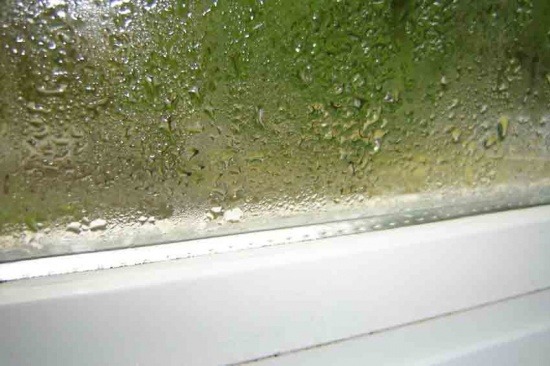MENU


Window condensation can be more than just a minor annoyance. Moisture that accumulates on the interior surface of your windows can cause your window sashes to rot and deteriorate. Condensation also encourages mold growth, which can put the health of everyone in your home at risk. Thankfully, there are plenty of ways to fight window condensation in your Indianapolis home. Here’s a closer look.

Interior Condensation
This is the primary type of condensation you need to worry about. It appears most often during the summer, especially in Indianapolis homes with air conditioning. Humidity in your indoor air condenses on the cool glass and drips down, accumulating at the base of the window. Interior condensation does not indicate a problem with your windows, but it can cause problems with your windows if you don’t take the following steps to control it.
Keep Your Home a Little Warmer
The greater the temperature difference between your home’s interior and the outdoors, the more condensation you will notice. There’s really no reason to keep your home at 68 or 70 degrees in the summer. Turn the thermostat up a few degrees — perhaps to 74 or 76 degrees. You’ll still be comfortable, but the windows won’t get as cold, so you won’t notice as much moisture.
Install a Dehumidifier
Air conditioners remove moisture from the air, but they don’t always do enough on the most humid days. A whole-home dehumidifier will help you keep your relative humidity in the ideal range between 30 and 45 percent, resulting in less condensation. Alternatively, purchase a portable dehumidifier and just run it on the most humid days.
Run Your Exhaust and Ceiling Fans
Taking a shower or boiling water on the stove can add a lot of moisture to your indoor air, making condensation more likely. Get in the habit of always using your bathroom and kitchen exhaust fans. Remind your family members to do the same.
Condensation between the Window Panes
If you have double-pane windows, you may notice water accumulating between the two panes of glass. This is an indication that air — and the vapor it contains — is leaking between the glass and the window sash. When windows become leaky like this, they really need to be replaced. New, tightly sealed windows won’t develop condensation between the glass, and they will also do a better job of resisting heat transfer, resulting in lower energy bills.
Exterior Condensation
The third place you may notice condensation is on the outside of your windows. Condensation tends to appear here in the evening when the temperature drops after a hot summer day. While exterior condensation may not be pretty, it is not a problem you really need to worry about. It will occur on even the newest, more efficient windows when outdoor conditions are right. There’s plenty of airflow outside, so the condensation will soon evaporate.
If there is condensation on the windows in your Indianapolis home, pay close attention to where the condensation is forming. Interior condensation must be dealt with to prevent window damage. Condensation between the panes is an indicator of window damage, and exterior condensation is an occasional occurrence that you don’t need to worry about.
Are you thinking of replacing the windows in your Indianapolis home? Contact Renewal by Andersen to schedule a free, in-home consultation and learn more about our energy-efficient windows.
Topics: Window Condensation, Indianapolis home